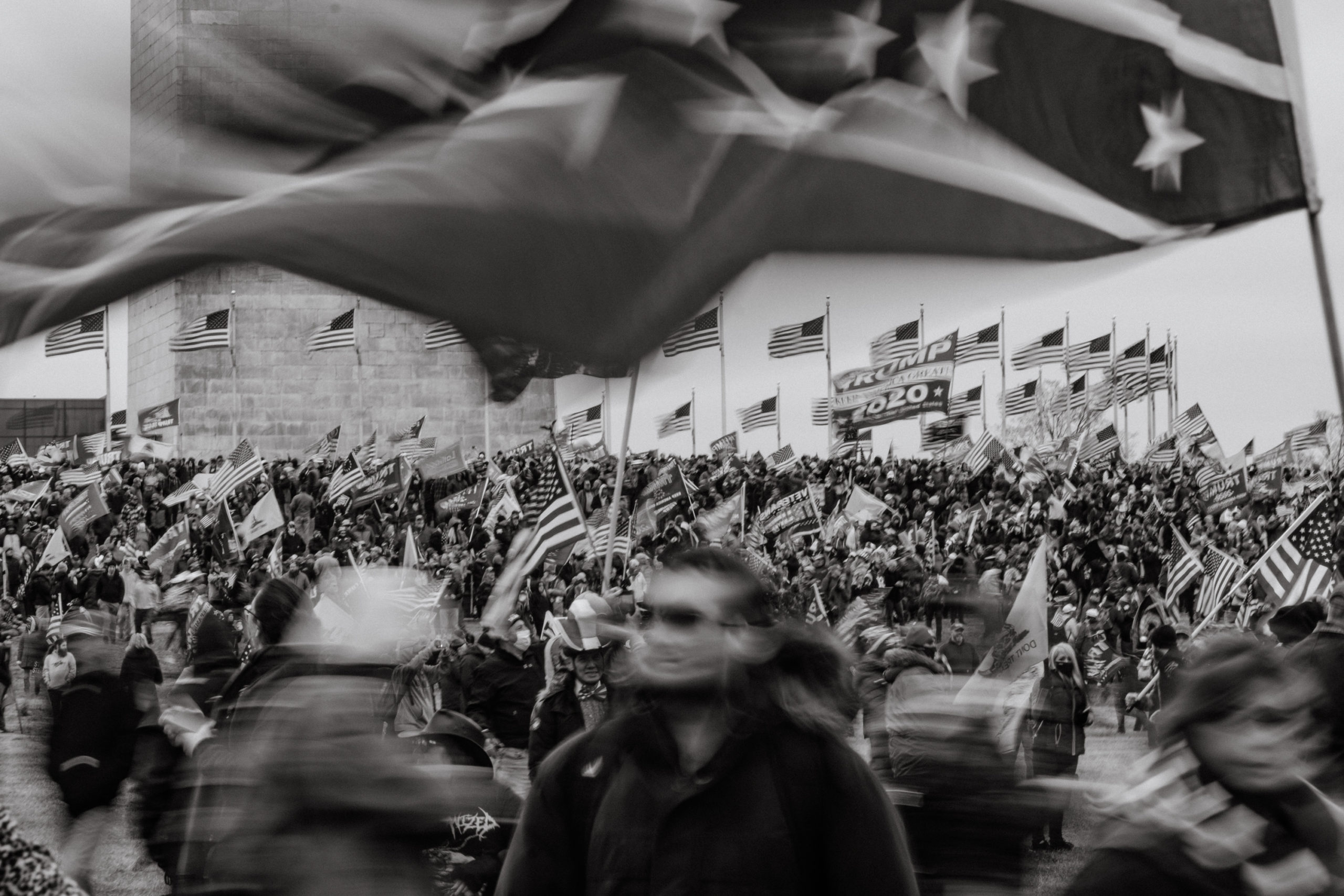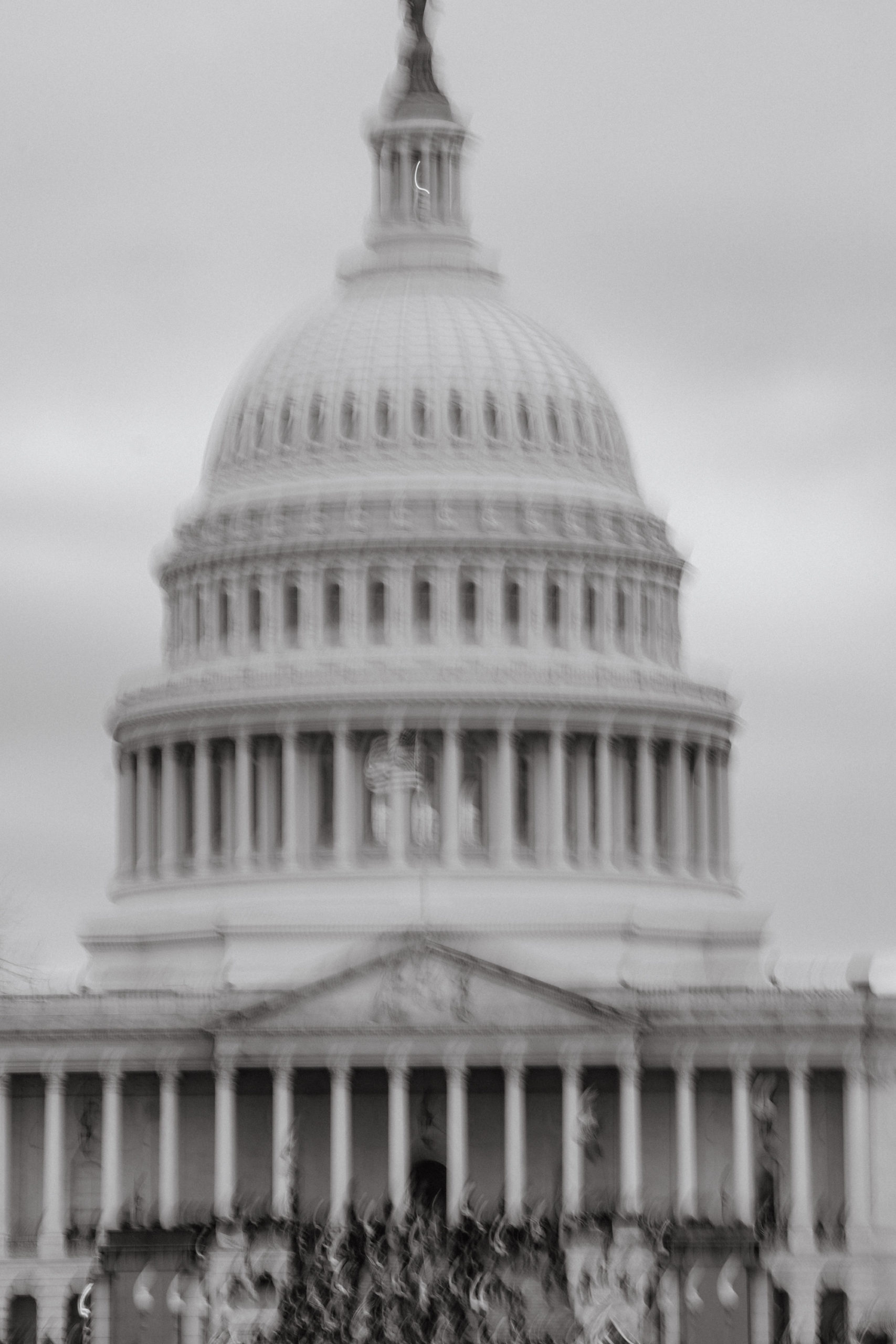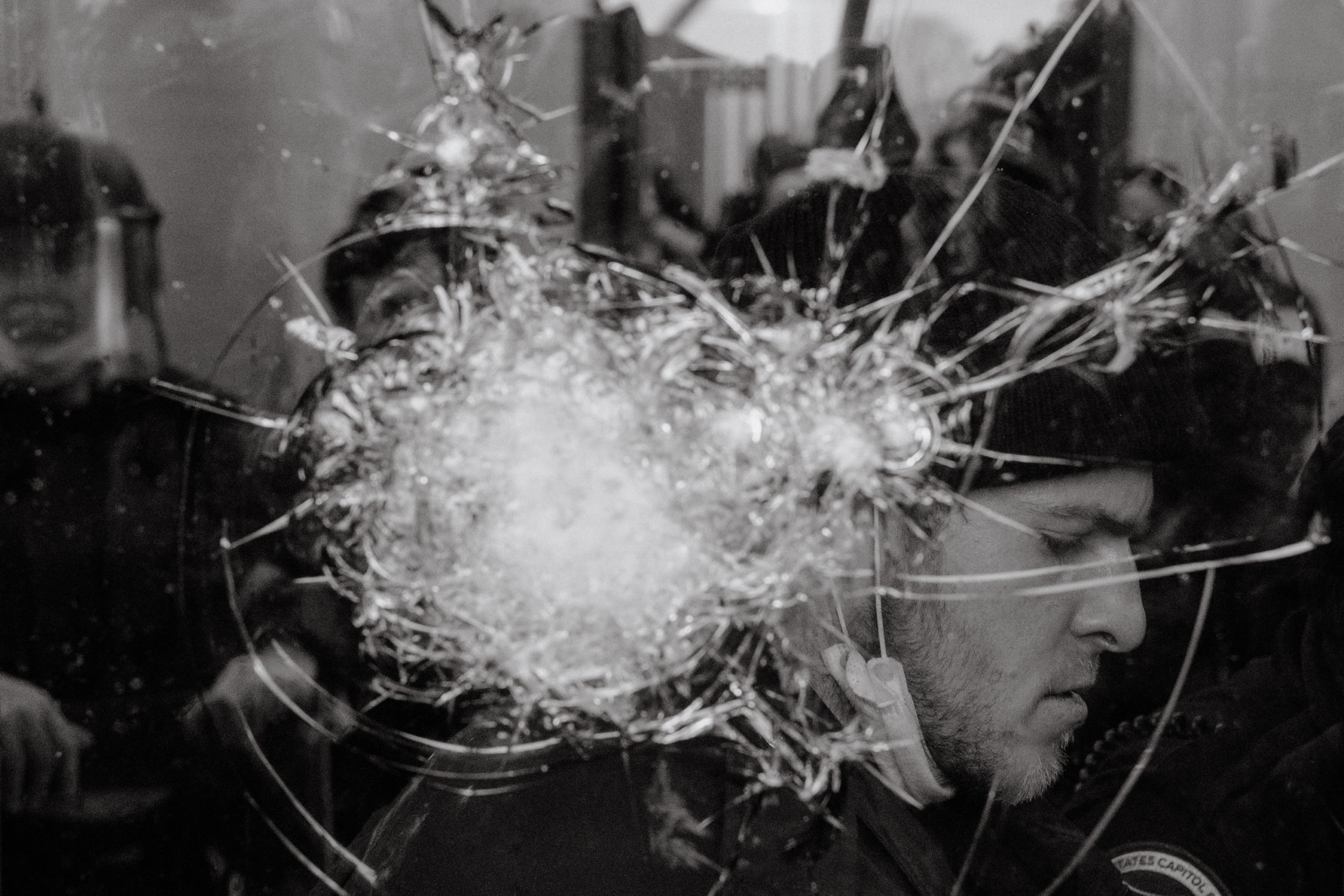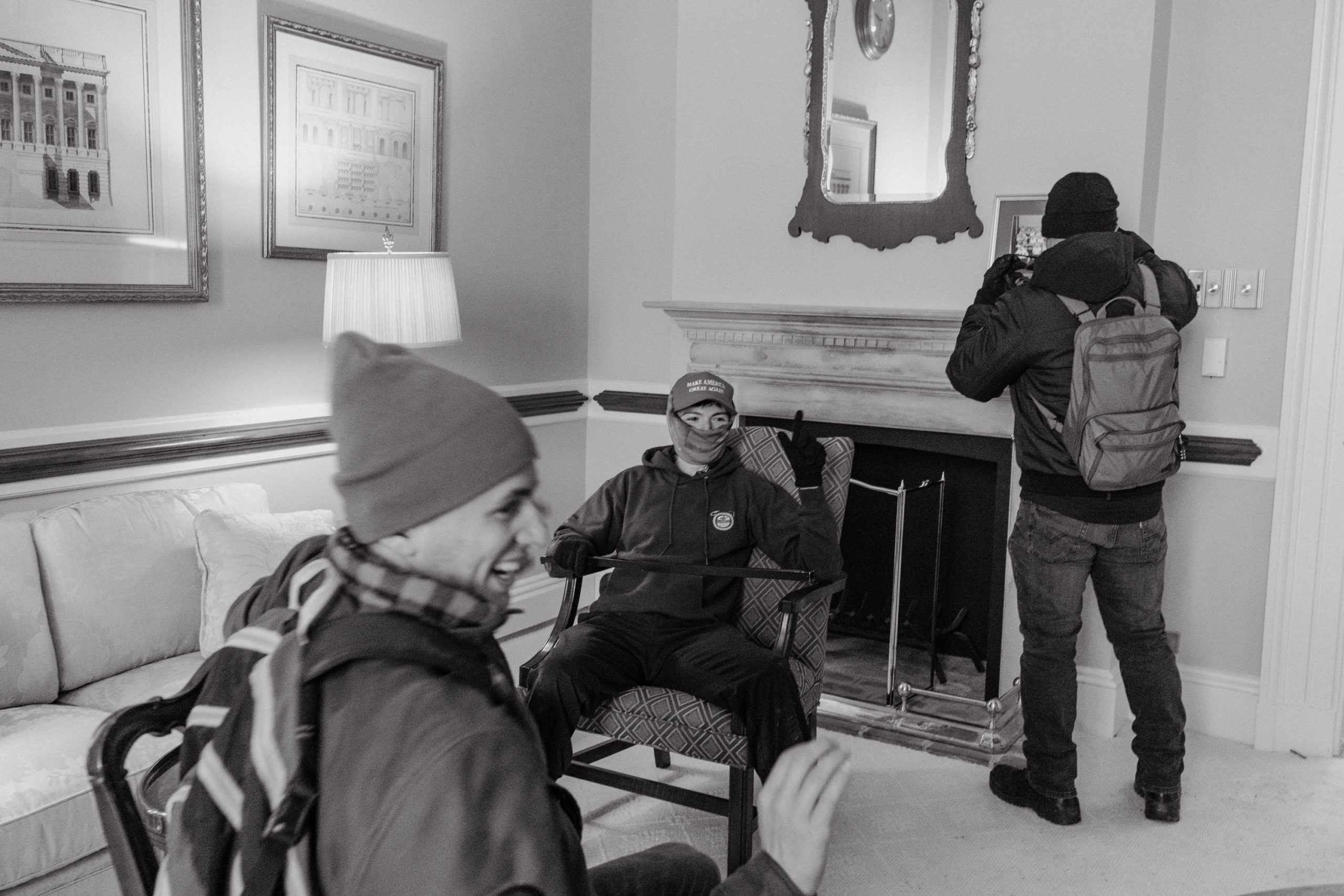When I was a kid, the only capitol I had been to was in Austin on school field trips. The one that housed our nation’s lawmakers was an icon I’d only seen in photos. I remember a story in the Austin American-Statesman proudly declaring that the Texas State Capitol was taller than the one in Washington, D.C. It was a whole spread comparing both buildings—almost suggesting to readers, tongue-in-cheek, that our Capitol could stand next to America’s if it seceded from the Union.
On January 6, 2021, I found myself not only inside the U.S. Capitol for the first time, but running away from angry insurrectionists that had just broken through windows and doors to try to stop the certification of the 2020 presidential election.

For much of the previous year, I had been covering the groundswell of anger, violence, and conspiracy theories coming from former President Donald Trump’s base for The New York Times and TIME magazine. What once seemed like fringe groups—Proud Boys, Q-Anon, and right-wing militias—became more mainstream the closer it got to Election Day. Days after, I photographed federal, state, and local Republican politicians lining up for photo-ops with dangerous conspiracy theorists from Dallas and armed militia members from Houston.
When January came around, I waited patiently for my editors at TIME to check their emails after the New Year’s festivities to suggest covering the “Stop The Steal” rally in Washington, D.C. I described it as a chance to see what would become of Trump’s most ardent supporters at the end of his administration. I ended up photographing one of the darkest days in American history.
According to trackers from the Department of Justice, Texas was behind only Florida in contributing rioters to the insurrection at the Capitol. Texans came from all corners of the state to decry what they saw as a rigged election. Around the city, I saw many waving “Texans for Trump” flags alongside Gadsden flags (the ones that say, “Don’t Tread on Me”). Every other car parked in front of the hotels seemed to display our state’s signature black-and-white license plate.
As the rally began on the lawn of the Ellipse south of the White House, I was struck by how large the crowds were—a sea of red hats, each representing a person who bought into this lie that the election was stolen from their president. Before Trump’s speech was even halfway done, I began to notice streams of people making their way toward the Capitol. I made my way down Constitution Avenue and found myself among crowds of protesters getting angrier by the second. I furiously sent out text messages to my colleagues: “Get to the Capitol NOW.”

I’m not sure how many times I was shot with rubber bullets or disoriented by flashbangs. Coughing through teargas, I felt the crowd’s center of gravity move beyond the line of police officers toward the windows and doors of the building. I followed a group of men—one wielding a Capitol Police riot shield with a radio earpiece—to the nearest set of windows being smashed open. U.S. District Court Judge Timothy Kelly would later describe this moment as “the tip of the spear that pierced the United States Capitol.” As I photographed the angry rioters climbing through the broken glass, I took a deep breath. I followed them through the halls, eventually coming upon one of the most defining scenes of the riot: the group of men I’d pursued facing off with Officer Eugene Goodman in the halls before heroically leading them away from the Senate chamber.At one point, a group of five or six men accused me of not being one of them because I was wearing a “real mask” designed to block COVID-19 particulates. They pinned me against a wall and ripped off the mask inside one of the meeting rooms in the Capitol. I tested positive for COVID-19 a few days after and watched the inauguration from isolation.

I have had a difficult time coming to terms with what had happened. In my years as a photojournalist, I had become familiar with the trauma of political violence, having seen the horrors of war and poverty in places like Iraq and Afghanistan. But this was different. I had the privilege of leaving foreign war zones whenever I deemed it too dangerous or stressful. I had the privilege of being an American and partaking in a largely stable democratic government. I had the privilege of not being surrounded by people who wished me harm just because of who I am.
When I returned to Texas, I noticed homes proudly displaying Trump flags outside their doorways along the two roads that lead to my neighborhood. I couldn’t shake the thought of the person with a MAGA hat waiting behind the checkout line at the H.E.B. wished me harm. I couldn’t get over the feeling that at any time, any one of those men who pinned me against the wall and ripped my mask off would turn out to be a neighbor I waved at every morning as I stepped out to get coffee. It took me the rest of 2021 to work through a lot of those feelings. It was my first time in therapy.
The morning after the world watched the fragile foundations of American democracy shake on live TV, a fellow photographer friend and I went to get coffee at a shop connected to a hotel near the Capitol. Outside was a line of trucks and minivans getting packed by people sporting MAGA hats and shirts. Before I entered the building, I heard someone say, “We gotta get going. It’s a long drive back to Texas!”








